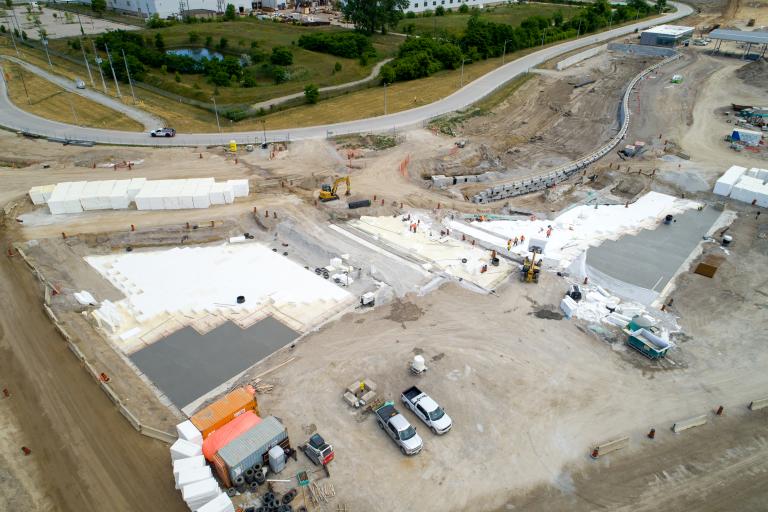As work progresses at the Canadian and US Ports of Entry and the Michigan Interchange, Bridging North America has integrated a unique material called Expanded Polystyrene (EPS) blocks as part of their construction technique. While they will not be visible once work is complete, these geofoam blocks play an important role in construction.

Similar to Styrofoam found in everyday packaging and take out containers, EPS blocks are denser and stronger to support buildings and embankment loads. EPS blocks are primarily used in the construction of highways, bridges, embankments and parking lots, but there is a myriad of other uses as well. Since geofoam is a soil replacement, it can be covered to look like a wall or a natural slope, making it an aesthetically pleasing option.
As part of the Gordie Howe International Bridge project, this innovative product is used to avoid ground settlements under foundation for buildings and excessive loads over buried structures such as city sewers. The Windsor-Detroit area sits on a thick layer of saturated clay. When a load is added, it compresses the saturated clay and water squeezes out. This causes a settlement, the downward movement of the ground, that can cause issues for the structures above.
EPS blocks are used to avoid settlements in a process called “compensated foundations.” Instead of building on top of the normal soil and ground, crews replace a large volume of the soil with EPS material, then continue to build on top. As a result, there is no physical load added to the ground and no settlement occurs.
EPS blocks are strong enough to withstand heavy pressures, meaning they will not deform or compress under the weight of a building. Despite their strength and rigidity, EPS blocks are lightweight, making them easy to work with.
Approximately 34,500 EPS blocks will be used across the project.



